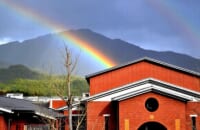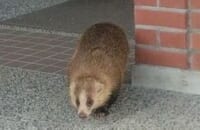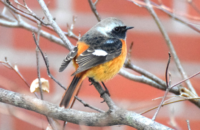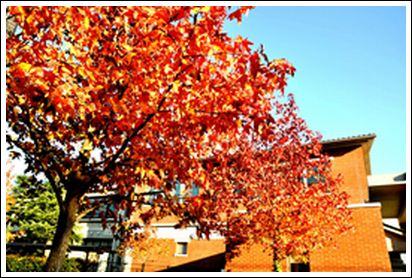 近年、四季の中で「春」と「秋」の時季が短くなったように感じます。せっかく秋が始まってもすぐ冷え込みが厳しくなり、短期間で紅葉、落葉し「冬」を迎える…。そんな中でも本校生や同志社小学校の生徒・児童のみなさんは、短い「秋」をしっかり楽しんでいます。先日、小学校低学年の児童が朱色と橙色が微妙に入り混じった葉を少し見つめたあと、宝物を得たように大事そうに持ち帰っていました。きっと家族へのおみやげだったのではないでしょうか。
近年、四季の中で「春」と「秋」の時季が短くなったように感じます。せっかく秋が始まってもすぐ冷え込みが厳しくなり、短期間で紅葉、落葉し「冬」を迎える…。そんな中でも本校生や同志社小学校の生徒・児童のみなさんは、短い「秋」をしっかり楽しんでいます。先日、小学校低学年の児童が朱色と橙色が微妙に入り混じった葉を少し見つめたあと、宝物を得たように大事そうに持ち帰っていました。きっと家族へのおみやげだったのではないでしょうか。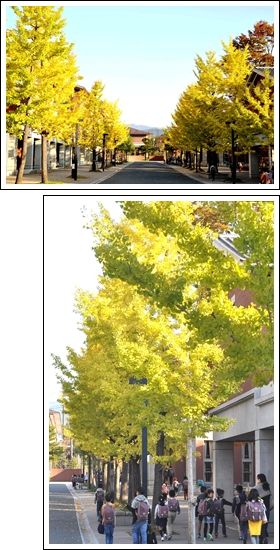 さて、「こうよう」には「紅葉」と「黄葉」があります。理科的にみると、落葉樹にみられる冬に備えた営みが葉に現れた現象ですが、その葉に含まれる色素の違いで、「紅葉」と「黄葉」が生まれます。岩倉キャンパスでも「紅葉」にはトウカエデ、ナンキンハゼ、ヤマボウシ、「黄葉」にはイチョウ、カリンが目立ちます。一方ケヤキ、エノキ、ムクノキなどは渋い茶色です。もともとの緑色はクロロフィル(葉緑素)が原因ですが、これが分解し、アントシアニン(赤)とカロチノイド(黄)が目立ち始めると、その樹木の葉特有の色の変化が始まります。
さて、「こうよう」には「紅葉」と「黄葉」があります。理科的にみると、落葉樹にみられる冬に備えた営みが葉に現れた現象ですが、その葉に含まれる色素の違いで、「紅葉」と「黄葉」が生まれます。岩倉キャンパスでも「紅葉」にはトウカエデ、ナンキンハゼ、ヤマボウシ、「黄葉」にはイチョウ、カリンが目立ちます。一方ケヤキ、エノキ、ムクノキなどは渋い茶色です。もともとの緑色はクロロフィル(葉緑素)が原因ですが、これが分解し、アントシアニン(赤)とカロチノイド(黄)が目立ち始めると、その樹木の葉特有の色の変化が始まります。
少し前、同志社小のみなさんは、黄金色に彩られた屋根の下を通って登校していました(写真下)。
岩倉の四季の微妙な変化を日々感じながら、自然からのメッセ-ジと共感する感性を育くんでいって欲しいです。
In recent years, it feels like spring and autumn are getting shorter. Nowadays, just as autumn starts, it soon gets cold, but the students on our campus get to enjoy this season.
Just he other day I saw an elementary school student pick up a leave that had changed color a little to take home as a present.
Within these leaves, there are those that change to yellow and those that change to red. This depends on the type of tree and the chlorophyll in the leaves. As it gets colder, the chlorophyll that makes the leaf green breaks down to become either anthocyanin (red) or carotenoid(yellow).
Recently, as you can see in the photos, many students walked to school under a canopy of yellow.
We can feel the changes in nature every day in Iwakura.
